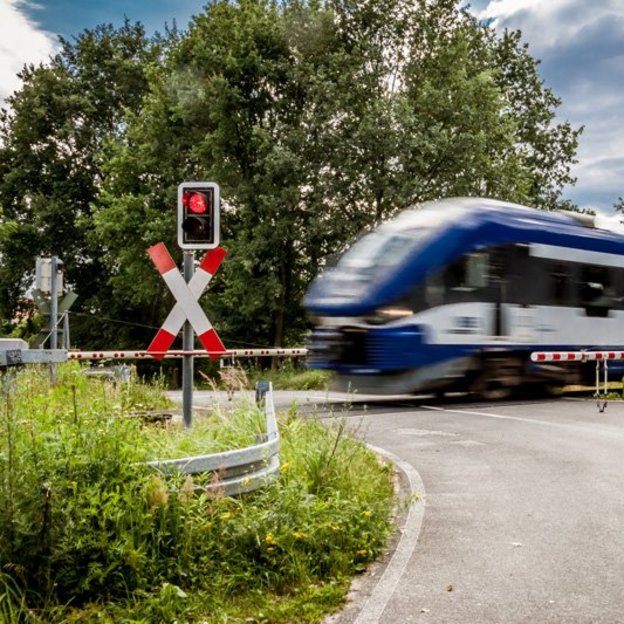98 Prozent aller tödlichen Bahnunfälle am Bahnübergang
Frust über das lange Warten vor der geschlossenen Schranke übersteigt manchmal das aktuelle Risikobewusstsein.

Frust über das lange Warten vor der geschlossenen Schranke übersteigt manchmal das aktuelle Risikobewusstsein.

Time and again, tragic accidents occur at level crossings, such as recently in North Rhine-Westphalia, where a scooter driver was hit by a train and fatally injured, and in Lower Saxony, where the driver of a postal vehicle suffered life-threatening injuries and the driver of a tractor was seriously injured. From a railroad perspective, one in three accidents occurs at a level crossing, from a road traffic perspective less than one in a hundred. “We urgently need to reduce the number of accidents at level crossings with very serious consequences,” says Stefan Pöting, Head of Railway Technology at TÜV NORD.
According to a study carried out last year by the International Union of Railways (UIC), 27 percent of all train accidents occur at level crossings, and the figure is as high as 98 percent for fatal accidents. “Crossings are always dangerous,” says Pöting. “But when the train comes into play, we have to deal with long braking distances that cars, cyclists and pedestrians can't even imagine.” At 160 km/h, a local train only comes to a halt after around 700 meters, even in the event of emergency braking.
And against a train, even a heavy truck is a weak road user; it has no chance against an approaching train.
More technical safety devices, more safety
Every additional technical safety device at the level crossing increases safety, says Pöting. “Any technical safety device such as a barrier or warning light is better than just a St. Andrew's cross.” A barrier must be actively bypassed in order to cross the track. However, the high risk of crossing a level crossing that is open to trains is often significantly underestimated, as the quiet trains are often noticed too late. Pöting: “Unfortunately, the frustration of the long wait in front of the closed barrier sometimes exceeds the current risk awareness.”
In addition to technical safety measures, education is key to ensuring greater safety. Pöting: “We all need to understand that a short wait in front of the level crossing is not important. It's better to arrive late than never.”
Founded over 150 years ago, we stand for security and trust worldwide. As a knowledge company, we have our sights firmly set on the digital future. Whether engineers, IT security experts or specialists for the mobility of the future: in more than 100 countries, we ensure that our customers become even more successful in the networked world.